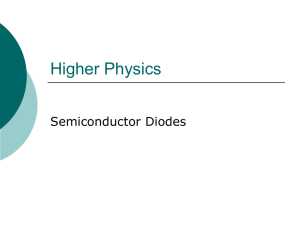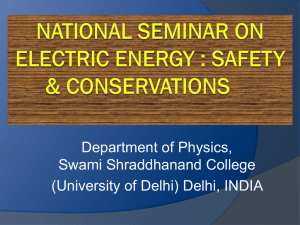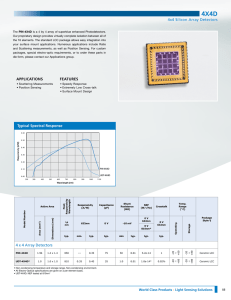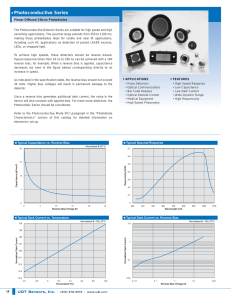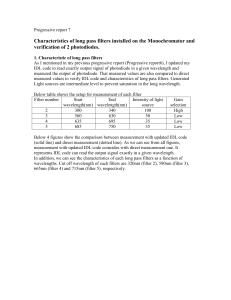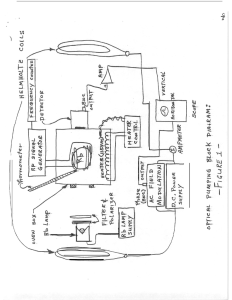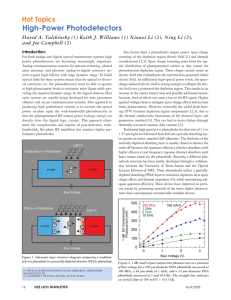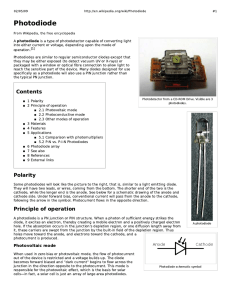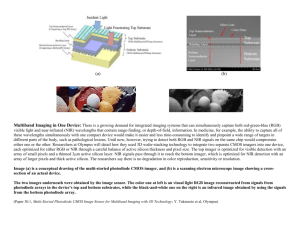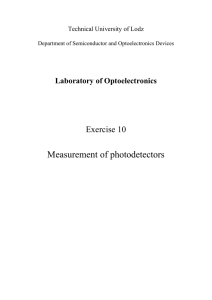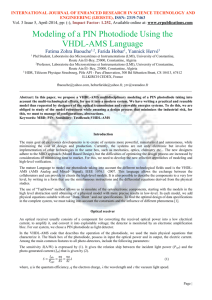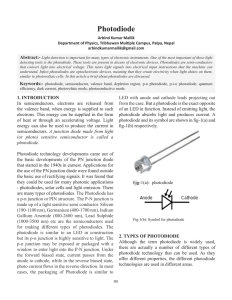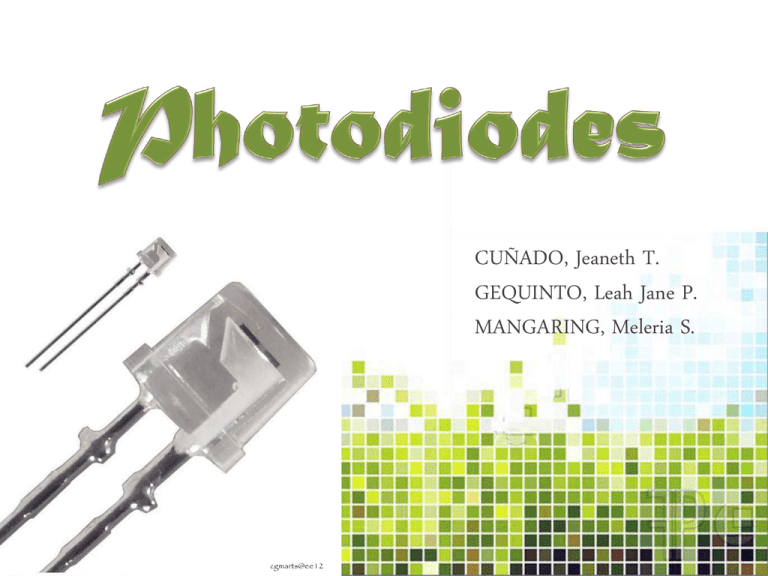
CUÑADO, Jeaneth T.
GEQUINTO, Leah Jane P.
MANGARING, Meleria S.
cgmarts@ee12
PHOTODIODE
A photodiode is a type of photodetector capable of converting light into
either current or voltage, depending upon the mode of operation. The
common, traditional solar cell used to generate electric solar power is a
large area photodiode.
• A photodiode is designed to operate
in reverse bias.
• Photoelectric effect.
• Photocurrent.
OPERATION
HISTORY & THEORY
• Photodiode technology developments came out of
the basic developments of the PN junction diode
that started in the 1940s in earnest. Applications
for the use of the PN junction diode were found
outside the basic use of rectifying signals.
• Photodiode technology was refined in the 1950s
and in the latter part of that decade the PIN
photodiode was developed. Light absorption in the
wide depletion area of the PIN structure was first
investigated in a paper published in 1959 by
Gartner. Although silicon has been the favoured
material for photodiodes, germanium can also be
used, and its use was first demonstrated in 1962
MATERIALS
STRUCTURE
TYPES
+
Advantages for the
Photodiode detector are high NIR
sensitivity and high speed.
- Disadvantages are limited
amount of pixels and no UV
response.
1. PIN photodiode
2. PN photodiode
3. Avalanche photodiode
4. Schottky photodiode
ADVANTAGES &
DISADVANTAGES
CHARACTERISTICS
Photodiodes
are
similar
to
regular semiconductor diodes except that they
may be either exposed (to detect vacuum
UV or X-rays) or packaged with a window
or optical fiber connection to allow light to reach
the sensitive part of the device. Many diodes
designed for use specifically as a photodiode use
a PIN junction rather than a p-n junction, to
increase the speed of response.
CHARACTERISTICS
SIGNIFICANCE
• In most cases, the photodiode is used to deliver
a trigger signal to an electrical device when it is
either exposed to a UV ray or X-ray. It may also
be used to deliver the same trigger signal when
the light source is either turned off or
the photodiode is blocked from the light source.
• A function that a photodiode can perform is to
keep an electrical device operating through the
process of converting light into a power signal or
voltage.
• Photovoltaic mode and photoconductive mode
are naturally occurring reactions to the light
APPLICATIONS
• P-N photodiodes are used in similar applications
to
other
photodetectors,
such
as photoconductors, charge-coupled devices,
and photomultiplier tubes. They may be used to
generate an output which is dependent upon the
illumination (analog; for measurement and the
like), or to change the state of circuitry (digital;
either for control and switching, or digital signal
processing)..
• Photodiodes
are
used
in
consumer
electronics devices such as compact
disc players, smoke detectors, and the
APPLICATIONS
many applications either photodiodes or photoconductors may be used.
Either type of photosensor may be used for light measurement, as
in camera light meters, or to respond to light levels, as in switching on
street lighting after dark
• Photosensors of all types may be used to respond to incident light, or to a
source of light which is part of the same circuit or system. A photodiode
is often combined into a single component with an emitter of light,
usually a light-emitting diode (LED), either to detect the presence of a
mechanical obstruction to the beam (slotted optical switch), or
to couple two digital or analog circuits while maintaining extremely
high electrical isolation between them, often for safety (optocoupler).
APPLICATIONS
• Photodiodes are often used for accurate
measurement of light intensity in science and
industry. They generally have a more linear
response than photoconductors.
• They are also widely used in various medical
applications, such as detectors for computed
tomography
(coupled
with
scintillators),
instruments to analyze samples (immunoassay),
and pulse oximeters.
• PIN diodes are much faster and more sensitive
than p-n junction diodes, and hence are often
used for optical communications and in lighting
APPLICATIONS
• P-N photodiodes are not used to measure extremely low light intensities.
Instead, if high sensitivity is needed, avalanche photodiodes, intensified
charge-coupled devices or photomultiplier tubes are used for applications
such as astronomy, spectroscopy, night vision equipment and laser
rangefinding.
(According to
temperature…)
Photodiodes are basically reverse biased
diodes with optical windows that allow like to
shine on the PN junction. Like any diode, the
leakage current (otherwise known as a
photodiodes
'dark'
current)
increases
exponentially with temperature in accordance to
William Shockley's idea diode equation. This is
known as the quantum efficiency of the
photodiode. If the quantum efficiency of a
photodiode will increase with temperature, so as
well as the thermally induced noise.
EFFECTS
Archi
ves
BreakDown Voltage:
For small active area devices, by definition breakdown voltage is defined
as the voltage at which the dark current becomes 10 A. Since dark
current increases with temperature, therefore, breakdown voltage
decreases similarly with increase in temperature.
The End
cgm@ee12
All Rights Reserve
2012
melerz.pictures

